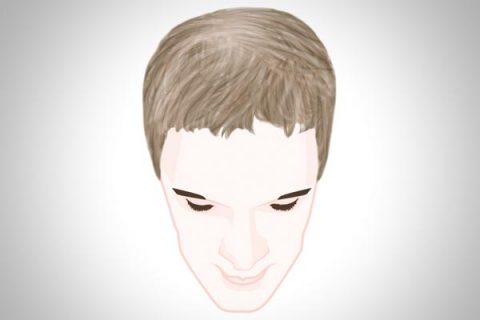HEREDITARY HAIR LOSS
Hereditary hair loss is the most common form of hair loss in men, accounting for 95 percent of cases. Around 60% of men are familiar with the problem of hair loss from their own experience. Hereditary or androgenetic hair loss in men means that the development of hair loss is preprogrammed in the genes. The loss of hair becomes evident through a receding hairline and at the back of the head.
The cause 
The cause of hereditary hair loss is a hypersensitivity of the hair root to the body’s own hormone dihydrotestosterone (DHT), which is formed in the hair root from testosterone.
The hair loss process
- In the hair root, DHT is formed from testosterone with the help of the enzyme 5-alpha-reductase.
- If predisposed to do so, the hair root reacts sensitively to DHT and gradually dies.
- The hair falls out.
DIFFUSE HAIR LOSS
 If the entire head is affected by hair loss and the number of hairs lost exceeds the normal amount of 100 hairs per day, this is diffuse hair loss. Although the hair bulb is intact, it is not sufficiently supplied with nutrients like amino acids (e.g. cystine) and B-group vitamins through the bloodstream.
If the entire head is affected by hair loss and the number of hairs lost exceeds the normal amount of 100 hairs per day, this is diffuse hair loss. Although the hair bulb is intact, it is not sufficiently supplied with nutrients like amino acids (e.g. cystine) and B-group vitamins through the bloodstream.
This has consequences:
- The hair bulb ceases its activity at some point.
- The life of the hair is shortened.
- It falls out prematurely.
- Increased hair loss is the result.
The reasons for diffuse hair loss in men are many and varied and can be related to certain life circumstances:
- Stress
- Nutritional deficits/diet
- Severe infections, e.g. flu
- Certain metabolic disorders
- Special form of seasonal hair loss (hair loss in spring or autumn)
Treatment
The cause of diffuse hair loss should be identified and, if possible, eliminated during a visit to the doctor. Diffuse hair loss can also be successfully treated by supplying suitable nutrients with Pantogar® capsules. Because of the life cycle of a hair, the treatment should be carried out for at least 3 to 6 months.
Recommendation: 3 x 1 capsule per day
ALOPECIA AREATA
 This form of hair loss is also called circular hair loss, or spot baldness. It is characterised by distinct, sharply defined bald patches of different sizes.
This form of hair loss is also called circular hair loss, or spot baldness. It is characterised by distinct, sharply defined bald patches of different sizes.
Alopecia areata is an inflammatory, usually reversible form of hair loss. The cause is unknown. Most likely, immunological (concerning the body’s defence mechanism) processes play a role in the development of the disease. Hereditary factors also seem to be of relevance, as in about 25% of cases the disease occurs in families.
Alopecia areata should be treated by a doctor.

